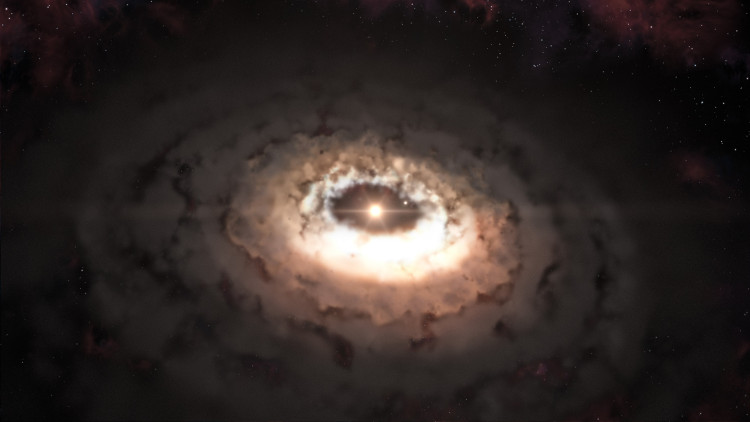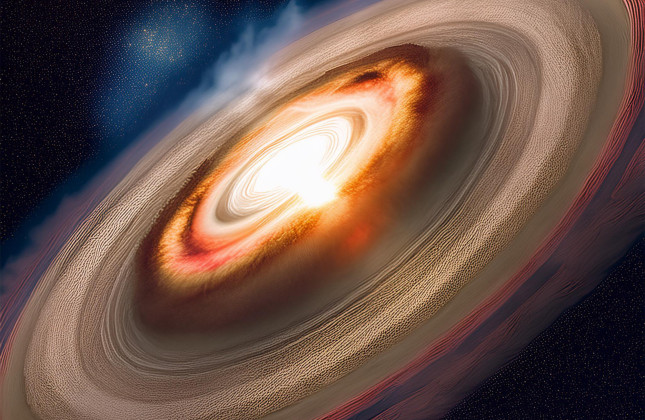Planetary scientists have long believed that the organic macromolecules that make the Earth suitable for life come from chondrites. These are primitive, primordial meteorites of aggregated pebbles. But until now, the question has been how these agglomerated pebbles in turn acquired the macromolecules. Researchers from TU Delft and Leiden University, among others, now present an explanation.
Combination of dust trap and radiation
In their model, the researchers combine two phenomena that have already been observed . The first is the phenomenon that in the dust disk orbiting a young star, there are regions where dust and ice accumulate. In such a dust or ice trap, the icy dust does not remain stationary, but moves up and down.
The second phenomenon involves the heavy irradiation, for example by stellar light, of simple ice mixtures. Laboratory research has indicated that very complex molecules of hundreds of atoms in size can be formed by irradiation. These molecules contain mostly carbon atoms and can be compared to black soot and graphene.
If, the researchers thought, there were dust traps that were also exposed to intense starlight, organic macromolecules might well form there. To test their hypothesis, the researchers set up a model that allowed them to calculate different conditions.
Tekst continues below video.
Animation of a dust trap. (c) ESO/L. Calçada [various video sizes]
Macromolecule in few decades
The model showed that under the right conditions, the formation of macromolecules is feasible in just a few decades.
"We had hoped for this result, of course, but it was a nice surprise that it was so obvious," says principal investigator Niels Ligterink. He is working at the University of Bern in Switzerland until July, when he will move to the Technical University of Delft (the Netherlands). "I hope that colleagues will pay more attention to the effect of heavy radiation on complex chemical processes. Most researchers focus on relatively small organic molecules of a few dozen atoms in size, while chondrites contain mostly large macromolecules".
"It's really super cool that we can now use an observation-based model to explain how large molecules can form," says co-author Nienke van der Marel of Leiden University in the Netherlands. Eleven years ago, she and her colleagues were the first to convincingly demonstrate the existence of dust traps. She has been hooked on the subject ever since. "Our research is a unique combination of astrochemistry, observations with ALMA, laboratory work, dust evolution and the study of meteorites from our solar system".
In the future, the researchers plan to study how different types of dust traps react differently to radiation and moving dust flows. This will help them learn more about the likelihood of life around different types of exoplanets and stars.
Scientific paper
The rapid formation of macromolecules in irradiated ice of protoplanetary disk dust traps. Byr: Niels F.W. Ligterink, Paola Pinilla, Nienke van der Marel, Jeroen Terwisscha van Scheltinga, Alice S. Booth, Conel M. O’D. Alexander, My E.I. Riebe. In: Nature Astronomy. [original | preprint (pdf)]
 Artist's impression of a dust trap. The dust trap provides a safe haven for small particles in the disk, allowing them to clump together and grow large enough to survive on their own. (c) ESO/L. Calçada [various sizes]
Artist's impression of a dust trap. The dust trap provides a safe haven for small particles in the disk, allowing them to clump together and grow large enough to survive on their own. (c) ESO/L. Calçada [various sizes]
